What Kind Of Template Or Tool Does Pdsa Use
In this article, you'll find the most useful nuts for using PDSA in quality comeback (QI), along with expert guidance on implementing this QI tool to improve your business concern processes — making them more than effective and more efficient.
Included on this page, you'll find details on how PDSA can help test changes in a process, the primary steps in the PDSA process, tips for executing PDSA, and examples of changes tested by PDSA.
What Is PDSA?
PDSA stands for plan-do-study-deed. PDSA is a basic quality improvement process that allows an organisation to test and analyze a alter on a pocket-sized scale to determine whether information technology is improving a process or making it more efficient.
Simple, powerful project management with Smartsheet. See for yourself.
Smartsheet is a deject-based platform that allows teams and organizations to plan, manage, and report on projects, helping you motion faster and achieve more than. See Smartsheet in action.
Sentry a free demo
What Does PDSA Embrace?
The PDSA framework covers 4 phases. It allows organizations to program to test a change in a process (program), to carry out that test by making changes in that process (practise), to observe and analyze, through measurements, the furnishings of that change (study), and then to decide how to react to that beginning examination (act).
Sometimes, the last phase includes the implementation of a modify; more often, it includes further modification of that change and then the repetition of another PDSA process. An older term for the same process is programme, do, cheque, human action, or PDCA.
What Is a PDSA Cycle?
The four steps in plan, practice, study, human activity are frequently called the PDSA cycle. In many cases, organizations repeat the PDSA cycle many times, as they make slight modifications to the change they're testing in order to make up one's mind how those modifications affect results.
What Is a PDSA Model of Change or a PDSA Alter Model?
The PDSA model of change, or PDSA change model, is a general term describing the procedure improvement theory behind the four phases of PDSA. You produce a desired change by executing the PDSA process or cycle, thus, leading to a "model of change."
What Is the PDSA Model?
PDSA model is a phrase sometimes used to describe the PDSA process or is an abbreviated way to refer to PDSA model of alter.
What Is PDSA Quality Improvement?
PDSA quality improvement is a item blazon of QI. The PDSA cycle is often function of a larger quality comeback programme. Some of the quality improvement processes are much more complex than PDSA solitary. These more than complex quality improvement processes include the following:
- Continuous Quality Comeback: This is an overall management philosophy in which organizations exercise ongoing piece of work to reduce waste matter, reduce errors, and increase efficiencies in their processes. Acquire more well-nigh continuous quality comeback at "Where Data Serves People: Benefits of the Continuous Quality Comeback Arroyo."
- Lean: This is a quality improvement process that defines value based on what the customer (or, in healthcare, the patient) wants. The model focuses on reducing activities that don't add value, making tasks more error-proof, and constantly reducing waste in a process. Learn more most Lean projection direction at "The Definitive Guide to Lean Project Management."
- Six Sigma: Originating in the U.S. manufacturing industry, this quality comeback model works to meliorate efficiency past minimizing variability in a process and then finding and correcting errors. Learn more about Six Sigma by reading "Half-dozen Sigma for Beginners."
- Total Quality Management: This process focuses on quality improvement that is ingrained in an arrangement'southward culture and management system. Learn more near full quality direction at "A Quality Principle: Everything You Need to Know about Full Quality Management."
- Quality Comeback Collaboratives: Most oft used in healthcare, these are processes in which multiple organizations work together to improve a healthcare process in order to ameliorate intendance for patients.
How PDSA Can Be Helpful in Testing Potential Changes in a Process
PDSA is constructive for helping organizations sympathise and test their processes. PDSA also helps organizations sympathise how changes might improve their processes. Leaders and employees might consider using PDSA for the following:
- To confirm their hypothesis that a specific change volition result in an improvement
- To exam which of several possible or proposed changes will all-time lead to the desired improvement
- To determine how much comeback a specific modify might produce
- To evaluate whether a proposed alter will piece of work in a existent-earth environment
- To evaluate whether a combination of changes might improve a process
- To decide which combinations of changes will have the desired effects on the important measures of quality
- To evaluate the costs of a proposed change, along with how it might impact employees, customers, and other processes
- To help lower employee or other types of resistance when an organization implements a modify
Types of Changes or Processes That Are Near Ripe for PDSA Analysis
Organizations can use PDSA on almost any process to see how a alter might ameliorate the process.
Heather Larivee, an expert in continuous quality comeback and PDSA and the CEO of Sparkflo, LLC., a business consultancy, says she considers PDSA useful when leaders are analyzing virtually any procedure or effect inside their organization: "I really call up it's valuable all the time, even when you're just exploring an idea. 'Should we do this? Is it even viable?'"
All the same, PDSA can be especially helpful for certain types of processes or changes — sometimes chosen "promising changes." Those changes include the following:
- Eliminating Waste product: Yous can analyze any activity your organization performs or resource your arrangement uses to ensure it adds value.
- Understanding and Optimizing Inventory: Understanding how and where inventory exists within your arrangement, and how information technology moves, can uncover opportunities to reduce waste and save money.
- Improving Workflow: Y'all can ensure that work flows equally efficiently and effectively every bit possible in an organizational process.
- Managing Time: You can analyze the time information technology takes for your organization to reach certain tasks and how to shorten those fourth dimension cycles.
- Reducing Unnecessary Variation: Reducing variation in many processes makes results more predictable and reduces errors.
- Redesigning Systems to Reduce Errors: Y'all can analyze and redesign your systems, so they are less susceptible to man error.
- Improving the Work Environs: Improving the piece of work surround for employees can amend operation throughout your organization.
The Kickoff Questions You Should Enquire every bit You lot Embark on PDSA Work
The PDSA Model for Improvement was developed by a quality improvement arrangement called Associates in Procedure Comeback. Assembly in Process Improvement was founded past William Edwards Deming, a pioneer of quality comeback processes who worked with the Japanese manufacturing industry subsequently Globe War II.
The Model of Improvement asks the following three foundational questions in conjunction with the plan, practise, study, act cycle:
- What are nosotros trying to attain?
- How volition we know that alter is an improvement?
- What change can we make that will result in improvement?
Master Steps in the PDSA Process, Including Details Within Each Step
Hither are the four primary steps of the PDSA process, along with the tasks and details relating to each step:
- Programme:
- Depict what you lot want to accomplish in an aim statement or a project charter, or both.
- Describe the electric current process, the issues with that process, and the overall context.
- Recruit PDSA team members who fully understand the process yous're modifying.
- Identify possible causes of the problem.
- Place possible changes or alternatives that might fix the problem or improve the process.
- Make predictions about what volition happen with proposed changes and why.
- Plan the exam of the change, including a plan for what information you will collect and how you will collect it.
- Implement SMART goals (specific, measurable, attainable, relevant, and timely) for the test. Learn more nearly writing SMART goals here.
- Determine what resources you volition need.
- Make up one's mind the action steps for the test, along with the people responsible for each footstep.
- Determine the timeline for the PDSA cycle (i.eastward., how long the modify will accept to implement and analyze).
- Recall that yous may need multi-generational project planning, which refers to repeating PDSA cycles back to back equally yous make small modifications to the changes based on the changes that issue from each cycle.
- Practice:
- Draw in writing what happens when yous run the test.
- Collect data that yous identified during the planning stage. Your squad might find it helpful to use a bank check sheet, flowchart, swim lane map, or run nautical chart to capture data/occurrences as they happen over time. You lot may want to use tools similar a cheque canvass, swim lane map, Pareto chart, flow-chart, or run chart to help you collect and clarify the information. Certificate your observations and any problems and unexpected results you encounter.
- Study:
- Compare the data you've collected to the information you caused prior to the modify. And then, compare your most recent data to your predictions.
- Determine if the change resulted in the expected event.
- Determine on any lessons learned regarding how y'all implemented or how you could meliorate the change.
- Summarize in writing what you learned, including unexpected results, successes, and failures.
- Act: Based on what you learned from the test, your system should do the following:
- Adapt: Modify the changes and repeat the PDSA bicycle, including preparing a plan for the adjacent test.
- Adopt: Implement the changes in the modest area where you first tested and and so consider expanding to other departments.
- Carelessness: Change your approach entirely and repeat the PDSA cycle.
Larivee with Sparkflo says she thinks a more advisable term for the last office of PDSA is "adjust" rather than "human action." That'due south because in most cases an organization is going to finish the bicycle by slightly adjusting the changes and then restarting the wheel to determine if those changes will improve results. "The cycle never ends until you reach the betoken where you say, 'OK, the experiment has proved out. Nosotros've now determined the current all-time way for this process to operate,'" she says. "Or, organization leaders may make up one's mind to abandon the changes and piece of work at the problem from a completely different perspective. Either way, that 'act' step happens only after many PDSA cycles."
Tips for Executing PDSA Effectively
Executing PDSA poorly will not only be a waste of time; it could cause you to make changes — based on faulty results — that brand your procedure less effective and efficient than when you started. That'southward why understanding PDSA and executing information technology appropriately are and then important. Here are some tips from experts:
- Think near the Process: Analyze, with employee leaders who will exist part of the PDSA team, what the PDSA work on a specific concern process might look like.
- Ensure Diverse Participation: Ensure that your squad includes people who are familiar with all aspects of a process. Doing this often ways that your team volition be composed of people from different departments within your organization.
- Write Down a Tentative Plan: Create a uncomplicated certificate that covers how you program to clarify the procedure and tackle the piece of work, and accept team members read and talk over it.
- Create a Project Lease: A project charter is a detailed certificate that lays out the specifics of the procedure you plan to study, the members of the team, the basic goals of the project, and the scope of work. The scope of piece of work will provide parameters on what team members will focus on and promise to accomplish.
Yous can employ this template to create a scope of work for your project. It will help you depict important aspects of the project, including projection deliverables, individual and department responsibilities for those deliverables, timelines, and estimated costs.
Download Scope of Piece of work Template
Excel | PDF
Chuck Cox, a principal consultant with Austin-based Firefly Consulting, says creating a project charter for every PDSA project is vital. "It will not salve time if you skip the formal project charter step," he says. "It volition increment the time, effort, and frustration of all the people involved."
The project charter will help your team ready up the appropriate construction for your project and ensure that the team can reach what it hopes to, Cox says.
You can use this template to create a project charter for your team. A project charter provides an overview of a project, including team roles and responsibilities, financial data, goals, and constraints. Creating a detailed projection charter will assistance define your project and its expected outcome and will provide a high-level roadmap to follow.
Download Project Charter Template
Excel | Word | Smartsheet
- At Showtime, Piece of work with People Open up to the Change: Begin your testing of whatever proposed alter to processes with employees who believe in the change or believe in the possibility of improvement. Don't business your team with convincing people to accept the modify at this bespeak.
- At First, Go Slowly: Be careful and methodical at the beginning to ensure that the construction of the team, the definition of the problem, and the scope of work are solid.
"Go irksome to go fast," Cox says of beginning a project. "A expert project manager knows what the pace should exist at every stage of the problem solving, only the near of import time in a projection is at the very beginning. Establish a construction that will serve your team in an efficient way throughout your project."
- At First, Think Small: Begin PDSA work on a small scale or with a pilot projection. Y'all'll be better equipped to tackle and become more comfortable with the procedure; if yous start on a pocket-sized scale, you lot'll besides exist able to understand more clearly how to get together and analyze the data.
- Recall Brusque: Y'all should strive for short PDSA cycles in gild to let your squad to gain knowledge nearly whether the changes are having an consequence. Implementing shorter cycles also allows the team to make adjustments if necessary. A PDSA bike can run for equally little every bit a 24-hour interval or even less. Then, you'll run another PDSA wheel with what yous've learned. Your squad may run many PDSA cycles within a brusque time to continually make changes and modify a process. The do tin can result in real successes rather quickly.
PDSA is frequently used as part of quality improvement in the healthcare industry. In "Basics of Quality Improvement in Health Care," which appeared in the June 2007 edition of Mayo Clinic Proceedings, the authors cite a PDSA instance in which providers in an ambulatory medical dispensary were trying to improve "medication reconciliation" — the process of creating an accurate list of all the medications that a patient is taking.
In the dispensary'due south improvement process, each PDSA bike "lasted 24 hours, with changes made to the medication reconciliation process on the basis of lessons learned from each previous cycle," the authors write.
By the finish of the clinic's work, afterward a number of such PDSA cycles, "The average number of discrepancies per patient decreased by more than 50 percentage… The physician-documented medication list independent 47.iii percent of patient-reported medications at the start of the study and 92.vi percent by the end of the study. By the end of ane calendar month, the dispensary had standardized and implemented the new medication reconciliation process."
Once successful at a minor scale, you can expand. When your team has used the PDSA cycles to amend a procedure on a pocket-size scale and analyzed and understood the results, then you can expand to implementation on a broader calibration.
- Apply Assay Tools: Fishbone diagrams, Pareto charts, and similar tools can assistance your team visualize and analyze the results.
- Implement When You lot're Confident: Implement your idea — the change in the procedure — only afterwards you've considered and tested all the other reasonable options to make the same change.
Examples of Changes Tested by PDSA Cycles
Because the four stages of PDSA are like to the traditional scientific experimental method, PDSA concepts are often familiar to professionals in the healthcare industry.
Here is a simple instance of how the nuts of PDSA play out in ane specific process:
- Process: A doctor visits to help with blood sugar direction for diabetes patients.
- Program: The dr. agrees to ask one diabetes patient if the patient would similar to have a special doctor's visit to larn how to ameliorate manage blood sugar.
- Do: The physician asks his commencement patient the question during a regular patient visit.
- Study: The patient indicates involvement. The doctor is happy with the response.
- Deed: The physician plans to ask several other patients the question in the same way and to ready visits for the patients who are interested.
Following are two examples of using repeated PDSA cycles to improve a process, including using specific questions to answer during the planning stage:
Example of Changes Tested by PDSA Cycles: Disseminating and Encouraging the Completion of Patient Surveys
This instance of changes tested by PDSA cycles concerns disseminating and encouraging the completion of patient surveys. This example includes 3 PDSA cycles.
- Process (First Bicycle): This process seeks to disseminate and encourage the completion of patient surveys. Hither is the first bike of this PDSA:
- Plan: We plan to test a procedure of distributing and encouraging patients to complete clinic satisfaction surveys:
- Goals: We are seeking the completion of 25 surveys in one week.
- Steps:
- We will display the surveys at the patient checkout desk-bound.
- The desk bellboy volition encourage patients to complete the survey and place information technology in the box on the desk.
- Nosotros will behave the examination for i week.
- Do: We certificate our observations:
- Patients are often attention to other things at this time and do non want to take on some other task.
- Sometimes, the checkout area is busy, with people waiting.
- Nevertheless, the attendant ofttimes asks patients to complete the survey.
- Written report: What did we larn?
- Answer: Only eight patients had completed surveys by the terminate of the week. The process was not effective.
- Human activity: We document our conclusions:
- The patients did not want to complete the survey once the doctor was finished.
- We must observe a way to go patients to complete the survey when they accept time.
- Nosotros will encourage them to complete the survey at dwelling and will provide them with a stamped envelope to return the survey.
- Plan: We plan to test a procedure of distributing and encouraging patients to complete clinic satisfaction surveys:
- Process (Second Cycle): This process seeks to disseminate and encourage the completion of patient surveys. Here is the second cycle of this PDSA:
- Plan: We programme to test a procedure of distributing and encouraging patients to complete clinic satisfaction surveys:
- Goals: We are seeking the completion of 25 surveys in 1 week.
- Steps:
- Nosotros will display the surveys at the patient checkout desk-bound.
- The desk attendant volition encourage patients to accept the survey and an envelope with them when they leave, consummate the survey at habitation, and mail service information technology to usa.
- We volition comport the test for two weeks.
- Practise: We certificate our observations:
- The desk attendant tells patients about the survey asking during the checkout procedure.
- Patients accept other papers to bargain with at checkout.
- Approximately three in 10 patients take the survey and an envelope with them when they exit.
- Report: What did we learn?
- Answer: Only three patients had completed and returned surveys past the end of two weeks. The process was not effective.
- Deed: We document our conclusions:
- Patients did not want to exist bothered with boosted tasks at checkout.
- When patients left the clinic, they were unlikely to recall or complete the survey.
- We must arroyo patients at a dissimilar point in their visit, maybe when they're waiting for the doctor.
- Plan: We programme to test a procedure of distributing and encouraging patients to complete clinic satisfaction surveys:
- Procedure (Third Cycle): This process seeks to disseminate and encourage the completion of patient surveys. Here is the tertiary cycle of this PDSA:
- Plan: We plan to examination a process of distributing and encouraging patients to complete clinic satisfaction surveys:
- Goals: Nosotros are seeking the completion of 25 surveys in ane week.
- Steps:
- Nosotros will leave the surveys (with pens/pencils) in the exam room.
- We volition ask the nurse to practice the post-obit later on they've taken each patient's vital signs: mention the survey and enquire patients to complete information technology while waiting for the md.
- We will acquit the test for ane calendar week.
- Do: We document our observations:
- The nurse tells patients about the survey.
- Some patients need help reading the survey; the nurse is not able to help because they are besides busy.
- Periodically, the dr. enters the room while a patient is working on the survey. Therefore, the patient does not complete the survey.
- Written report: What did we learn?
- Answer: Patients had completed 24 surveys by the end of one week. The process was more constructive.
- Act: We document our conclusions:
- It was more than effective to ask patients to consummate the survey while they were still at the clinic.
- Most patients had time to complete the survey while they were waiting for the md.
- We must make up one's mind how to assist people who may need help reading the survey.
- Plan: We plan to examination a process of distributing and encouraging patients to complete clinic satisfaction surveys:
Example of Changes Tested past PDSA Cycles: Getting Doctors to Perform Teach-Dorsum with Patients
This example of changes tested by PDSA cycles concerns motivating doctors to perform teach-back with patients. Like the concluding example, this one as well includes 3 PDSA cycles.
- Process (First Cycle): This process seeks to motivate doctors to perform teach-back with their patients. Here is the starting time cycle of this PDSA:
- Plan: We programme to ask doctors to perform teach-back with the last patient they run across on Wednesdays. Teach-back is the act of having patients repeat back the instructions that the doctor gives them in social club to make sure they understand:
- Goals: We are trying to motivate doctors to perform teach-dorsum with patients more often. We are hoping physicians will find the process useful.
- Steps: We will enquire five doctors who hold clinic on Wednesday afternoons to perform teach-dorsum with their last patient of the day.
- We will prove these doctors teach-back video.
- Nosotros will check with the doctors at the end of the process to see whether they found it useful, or too time consuming, and whether they would do it again.
- Do: We document our observations:
- The doctors notice the teach-back video helpful and seem interested in doing teach-dorsum.
- Study: What did we learn?
- Respond: Four of the five doctors had washed teach-dorsum with at least one patient. One md had said she didn't know how to integrate a teach-back into a patient visit.
- Deed: We document our conclusions:
- Four of the five doctors felt comfy with teach-back and said they would continue using it.
- We will await for other teach-back resources to aid the fifth doctor understand how to integrate the process into a patient visit.
- We are set to introduce the teach-back process to the entire clinical staff.
- Plan: We programme to ask doctors to perform teach-back with the last patient they run across on Wednesdays. Teach-back is the act of having patients repeat back the instructions that the doctor gives them in social club to make sure they understand:
- Process (Second Cycle): The v doctors will perform teach-back with their patients. Here is the second cycle of this PDSA:
- Plan: We programme to enquire v doctors (later on they terminate clinic on Wed) the number of patients with whom they performed teach-back that twenty-four hour period.
- Steps: Nosotros volition check with the doctors at the end of the procedure to see whether they found it useful or too time consuming, and whether they would practice information technology again.
- Do: We document our observations:
- Some of the doctors cannot notice the advisable time or circumstance in which to perform patient teach-dorsum. Even so, all feel it is a worthy practise that they should remember and do more often.
- Study: What did we learn?
- Reply: Three of the five doctors had performed teach-dorsum with 3 patients. Ane had performed it with i patient. One hadn't performed information technology at all. (The non-performer in this bicycle was the same non-participant as in the offset cycle.)
- Act: We document our conclusions:
- Some of the doctors were using teach-back and some weren't.
- We realize that the goal of involving teach-back in half of all patient encounters might be unrealistic.
- We may place a sign in clinic rooms to remind doctors about teach-back.
- Nosotros will measure out frequency again in half-dozen months.
- Plan: We programme to enquire v doctors (later on they terminate clinic on Wed) the number of patients with whom they performed teach-back that twenty-four hour period.
- Process (Third Cycle): The five doctors volition perform teach-dorsum with their patients. Here is the third wheel of this PDSA:
- Plan: We plan to put signs proverb "Teach It Back" in exam rooms in order to remind doctors to perform this exercise.
- Steps:
- We will ask doctors if the signs reminded them to perform teach-back.
- We will see if teach-back increased in Wednesday afternoon clinics.
- Steps:
- Do: We certificate our observations:
- Nurses experience that the signs impede clinical care.
- Study: What did we learn?
- Answer: Four of the five doctors had each done teach-back with iii patients on Wednesday afternoon. 1 had done teach-back with ane patient.
- Four of the v doctors said that seeing i of the signs was a reminder to do teach-dorsum.
- Human action: We document our conclusions:
- The doctors needed a reminder to prompt them to employ the tool during patient visits.
- We volition not pursue further intervention.
- Plan: We plan to put signs proverb "Teach It Back" in exam rooms in order to remind doctors to perform this exercise.
Template for using PDSA in a Business Process
You can utilise this template to assess important PDSA questions that you desire to ask in order to better a business concern procedure. You can also use it to help you reply significant questions equally you move through the PDSA wheel. You can download this template for free and customize it to fit your needs.
Download PDSA Bicycle Template
Excel | Word | PDF
PDSA in Nursing
Nurses accept long been a part of quality improvement in healthcare. Because PDSA is a basic part of quality improvement, nurses have also been integral to PDSA cycles in healthcare.
Their position at the forefront of PDSA and quality comeback relates in large part to the traditional function of nurses in healthcare. They are routinely in the best position — 24 hours a day, seven days a calendar week — to come across how healthcare institutions deliver intendance to patients. Because of their central role in the healthcare arrangement, they are especially able to recommend — and assist test — changes that might improve handling.
Benefits of a Well-Executed PDSA
When an organization executes a PDSA wheel (or repeated PDSA cycles) properly, the exercise tin can be remarkably constructive at helping an organization determine the best changes to make in order to ameliorate a procedure. Here are some of the benefits of PDSA when yous execute it properly:
- Information technology enables the testing of changes on a small scale, which allows you lot to build and improve on examination cycles before implementation on a broader scale.
This quality tin help in analyzing different types of changes to a process. PDSA is particularly useful "if you desire to explore what happens when you pursue one choice versus another option," Sparkflo'south Larivee says.
That small-scale analysis tin as well help an system "avoid and detect pitfalls and unintended consequences," Larivee says. "It gives you the opportunity to make changes further upstream versus waiting until a project is complete and then finding out all of the bug y'all accept to set once the project is done."
- It allows organization leaders and staff to better understand organizational processes.
Cox, with Firefly Consulting, says PDSA is helpful "when trying to solve a problem that involves a process that is not very well understood. This describes just well-nigh every circumstance in which a problem has to be solved."
- Information technology is efficient, often not requiring excessive resources.
Cox says PDSA can be especially useful "when you lot don't have huge sums of coin to throw at a problem. When there are a limited corporeality of funds and/or resources and no tolerance for waste regarding reaching a viable solution, PDSA is both efficient and effective."
- It tin can sometimes help organizations save significant money past improving processes.
- It improves consistency, which almost always means improving quality.
- It can assist an organization adjust more hands to future external changes that volition touch its processes.
Cox says PDSA work non but improves an arrangement's procedure, simply likewise provides an organization's leaders and employees with new noesis almost that process. If an organization's employees have done their work properly, that knowledge will assistance them keep to ameliorate a procedure as they're monitoring information technology. Information technology will as well help them continue to improve a process equally inevitable internal and external factors bear on it in the hereafter.
"The environment surrounding any process is dynamic," Cox says. "When the surround changes — and information technology volition — will you have generated enough knowledge of the process to be able to change it in order to take advantage of the new surround? The goal is not merely to survive external change, but to thrive on information technology, to leverage it for greater advantage."
- Information technology can help make a process more than sustainable.
Organizations that go through multiple PDSA cycles in club to analyze a process understand that process better and empathise the fixes that will be the most efficient and effective in the long run, says Larivee. "PDSA volition go a long way toward ensuring that a process is sustainable," she says.
- It teaches an organisation's employees a problem-solving procedure that they tin can use over and over once more.
"By implementing PDSA, y'all requite people the opportunity to larn about a new problem-solving framework that they may non have been exposed to. You cannot put a price on that," Larivee says.
Hurdles to the Successful Execution of PDSA and the Biggest Mistakes Organizations Make
There are many mutual mistakes that organizations make (and many hurdles that organizations create) when trying to execute PDSA. These issues tin can render the PDSA ineffective or even impair the process an organization is trying to improve. The following are the nearly mutual mistakes and hurdles:
- Non Establishing the Advisable Telescopic of Work to Understand and Examination: Firefly's Cox says that organizations oftentimes establish a scope of work to analyze and test that's too broad. If an arrangement can't end the PDSA piece of work and go usable results within six months, the scope of work is too broad, he emphasizes. Leaders must narrow the scope to something that staff members can accomplish within half dozen months; after that, a team can perform other PDSA cycles on other parts of a trouble. Many PDSA cycles are much shorter than vi months.
- Not Establishing a Formal Projection Charter Every Fourth dimension: Leaders ofttimes bypass this step with the misperception that they're going to avert wasted fourth dimension and endeavor.
- Not Giving Enough Attention to the "Programme" Phase: Charles Freeman is a business consultant and community higher professor with expertise in Lean, PDSA, and other continuous quality improvement methods. He says that organizations often rush into bold they know the answer to improving a process; equally a outcome, they don't give enough attention to the "plan" phase earlier moving on to the "do" stage, wherein they'll test their hypothesis.
I always "ascertain measurements, clarify, and thoroughly telescopic out the context of what I'yard trying to achieve. Then, I expect at the situation from multiple angles — all before I get-go the implementation stage," Freeman points out. "On a percentage basis, the 'plan' should occupy the largest amount of time you spend on the whole bike. Well-nigh people spend the least amount of time on the planning. And, doing that will set you up for failure." (See Freeman's video on the history of PDSA hither.)
Larivee says that some organizations but desire to get to the doing stage. "Only, if nosotros don't know what nosotros're doing, we're probably not going to go good results," she says. "At that place'south a stiff drive simply to leap in when you don't fully understand the problem or its causes. When there'south no programme, you lot don't know what to measure. Therefore, you have no way of knowing whether the things you're doing are even working."
- Alternatively, Getting Stuck in the Planning Phase: Some organizations spend as well much time pondering, as well much time in the planning stage. "We can sit down around for days, months, or years in the planning phase and never move past that," she says.
"Yes, nosotros want to plan, just we also want to understand how the plan is working," she says. "And so, we take to do it. We take to do what we said we were going to do."
- Not Exploring or Using the Right Measurements to Gauge Success: "I think specially with improving technology, we have a lot more data available at our fingertips," Larivee says. "Only, non all data is applicable, and so information technology might non inform our PDSA."
- Assuasive Biases or Presumptions to Skew an Evaluation: Freeman says that information technology'south vital for organizations to utilize the correct metrics and measurements and to honestly evaluate what the results are showing. "You have this preset notion that something is the right solution," he says of a change that an organization might be testing. "Coming in with that presumption can bias the written report stage. You need to await at a alter realistically. Did it truly solve" the problems in a process?
- Not Creating Written Records of the Work: Yous must document your piece of work to better understand the process and help make the changes necessary for another PDSA cycle.
- Not Including Enough Feedback Opportunities During a PDSA Wheel: It is crucial to create sufficient feedback opportunities during a PDSA bike or immediately following a short PDSA cycle. "You must provide the maximum amount of feedback opportunities to allow your squad members to make whatever necessary mid-course corrections as they uncover new data," Cox says.
- Not Understanding How to Adapt PDSA to Address Different Bug: You must be able to adapt PDSA to address different issues in dissimilar stages of every quality improvement project.
- Thinking That PDSA Is Only for Small-Scale Tests: You tin also use information technology for large and wide processes.
- Overestimating the Brusque-Term Payoff: Some organizations assume the savings or the return on investment (ROI) for a QI or PDSA volition come immediately. Instead, they should exist calculating the savings and ROI using life bicycle costing, which assesses cost savings over a much longer term. Organizations are too oftentimes "driven by instantaneous costing," Cox says. "That causes you to make some bad decisions."
- Pursuing Changes That Don't Align with Your Arrangement's Overall Business Strategy: "No organisation has the resource to pursue every problem," Cox says. "So, employ the organisation'due south (overall business) strategy to guide which projects become worked on and which ones don't."
PDSA Hurdles and Mistakes in the Healthcare Manufacture
Quality improvement and PDSA piece of work have real value in the healthcare manufacture, and manufacture professionals use these techniques frequently. Here are some of the most common mistakes people make when implementing QI and PDSA:
- PDSA grooming overestimates the simplicity of the method and underestimates how organizations can utilize and accommodate it for a broad range of complex bug.
- In efforts to quickly train staff members to do the work, managers sometimes omit (and employees sometimes don't follow) important principles of the procedure. In exercise, these mistakes translate to the following:
- In a healthcare culture that expects quick action, teams motility too quickly from "program" to "practise" in the PDSA bike.
- Healthcare PDSA teams also spend besides much fourth dimension on "practice," failing to move on to the "study" phase.
Details on the American College of Physicians ACP Accelerate Programme
The American College of Physicians (ACP) has created a comprehensive quality improvement program that includes PDSA information and training for healthcare providers. The plan espouses four principal precepts for achieving effective quality improvement:
- Clinician engagement and ownership
- Team-based intendance
- Patient and family unit partnerships
- Maximum efficiency with minimal burden
The programme includes the following resources:
- ACP's quality improvement curriculum
- Medico-led coaching for quality improvement
- Chronic intendance programs and resource
Inquiry on PDSA Utilise in the Healthcare Industry
Experts have performed inquiry regarding the efficacy of PDSA, and quality comeback in general, in the healthcare industry. Hither are some of the findings of that research:
- A 2013 article entitled "Systematic Review of the Awarding of the Program–Exercise–Study–Act Method to Ameliorate Quality in Healthcare," in the journal BMJ Quality & Safety, establish that "From the articles that reported details of PDSA cycles, it was possible to define that variation is inherent not just in reporting standards, but in the acquit of the method, implying that the key principles of the PDSA method are frequently not followed."
- The same article suggested that although healthcare organizations are increasingly using quality improvement practices, "The testify base of operations for their effectiveness is poor." Almost PDSA, the commodity plant that "PDSA cycles are often a central component of QI initiatives. Still, few formal objective evaluations of their effectiveness or application have been carried out."
- A 2004 article entitled "Guidelines for Appraisal and Publication of PDSA Quality Improvement," in the journal Quality Management in Health Intendance, said that answering the post-obit four master questions tin make up one's mind the value of a quality comeback study:
- Is the quality improvement written report pertinent and relevant?
- Are the results valid?
- Are y'all using the appropriate criteria to interpret the results?
- Volition the study help a healthcare entity with its practice or organisation of care?
Research on How PDSA Worked in a Specific Process: Increasing the Effectiveness of Colon Cancer Screenings
A 2017 article entitled "Applying the Plan-Practise-Written report-Deed (PDSA) Approach to a Large Pragmatic Study Involving Condom Net Clinics," in the journal BMC Health Services Research, analyzed how PDSA worked in an effort to improve a study that was testing the effectiveness of a cancer screening program. The screening program involved the mailing of fecal immunochemical tests to patients of health centers in Oregon and California.
The article found that PDSA work refined the report'southward staffing methods, improved the report'due south outreach materials, and changed the workflow steps in the study's mailing program.
Use PDSA to Meliorate Your Processes with Real-Time Work Direction in Smartsheet
Empower your people to go to a higher place and beyond with a flexible platform designed to friction match the needs of your squad — and adapt as those needs change.
The Smartsheet platform makes it easy to program, capture, manage, and report on work from anywhere, helping your squad be more effective and get more than washed. Report on central metrics and become real-fourth dimension visibility into work as it happens with roll-up reports, dashboards, and automated workflows congenital to continue your squad continued and informed.
When teams have clarity into the work getting done, there's no telling how much more they tin accomplish in the same amount of time. Try Smartsheet for free, today.
What Kind Of Template Or Tool Does Pdsa Use,
Source: https://www.smartsheet.com/content/plan-do-study-act-guide
Posted by: cryersaterring.blogspot.com

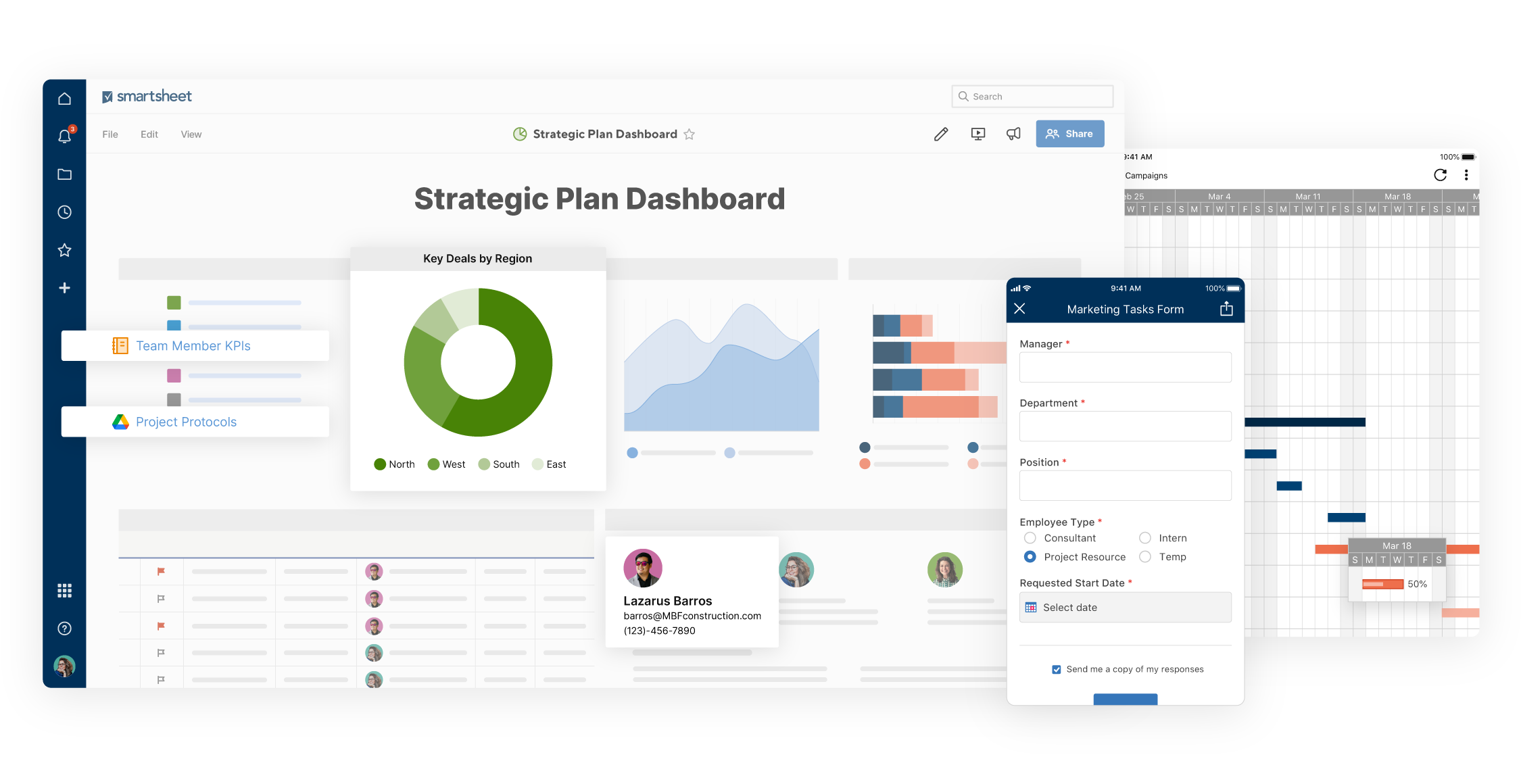

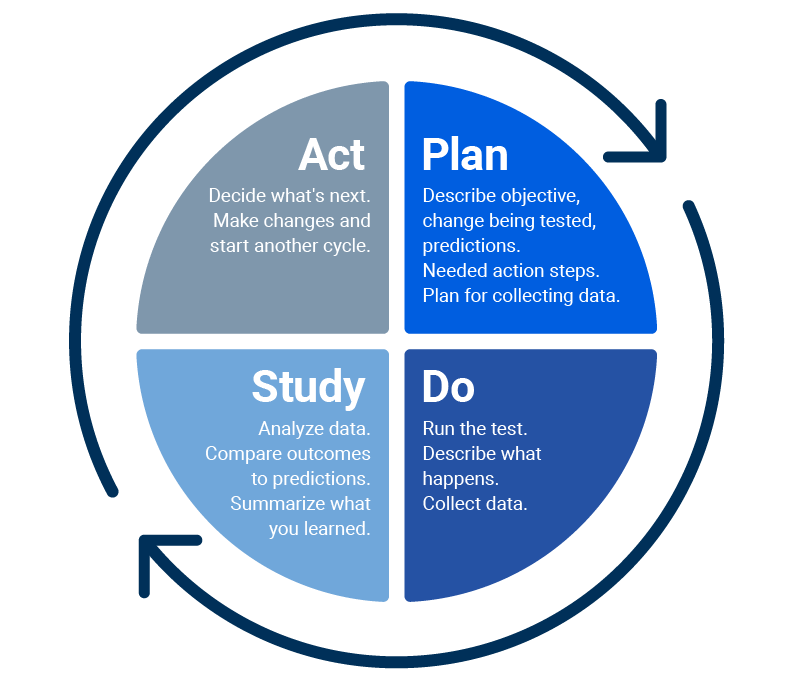
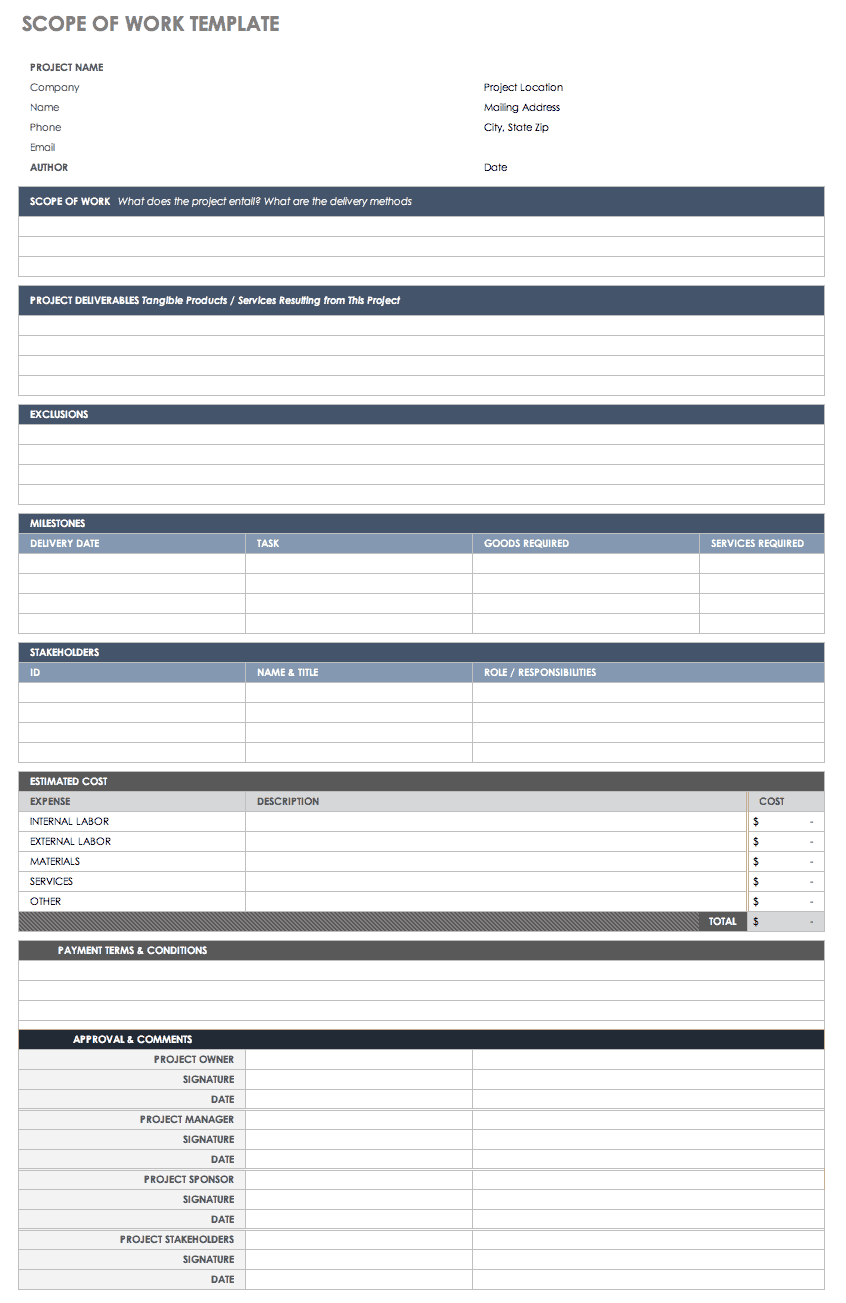

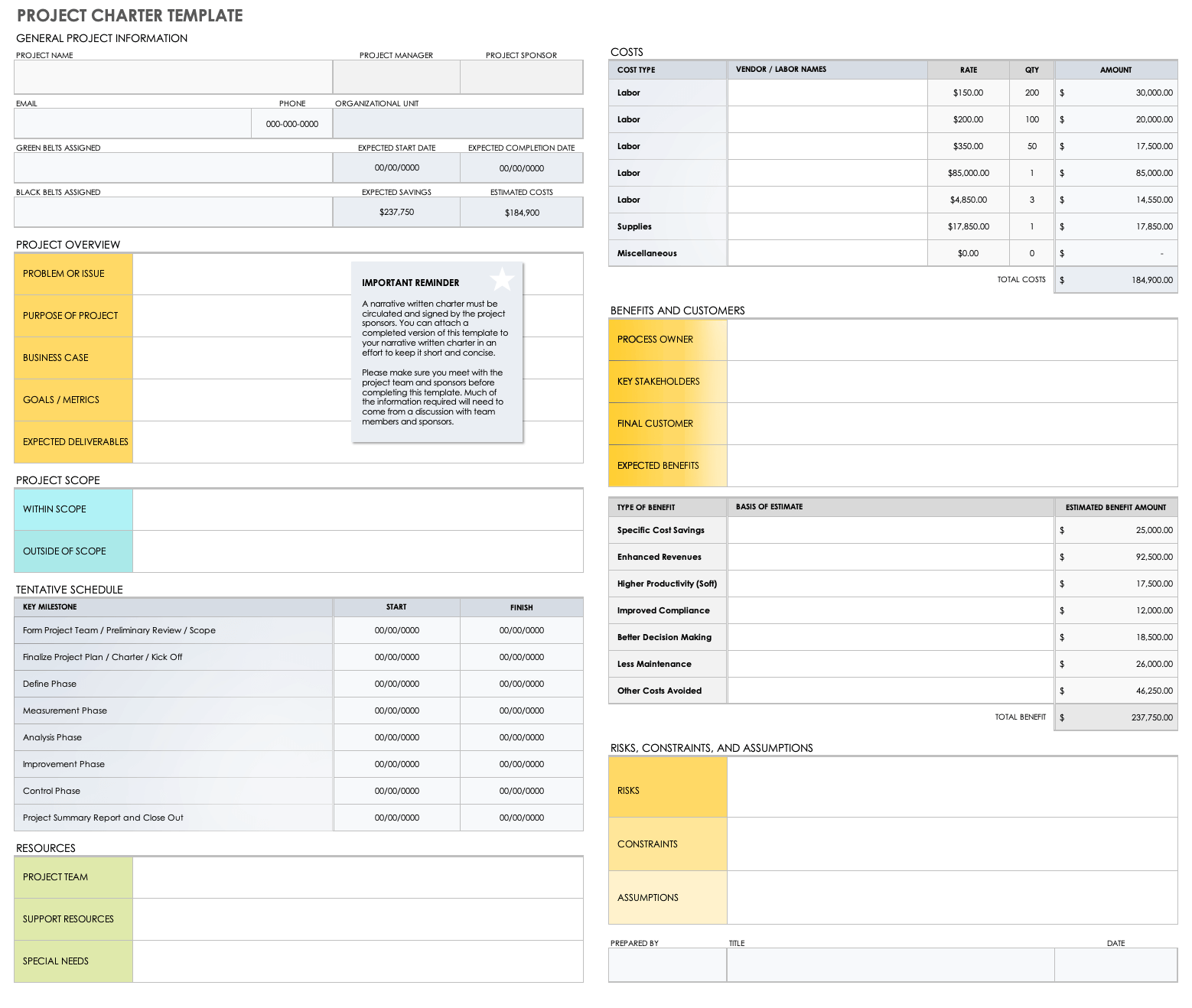
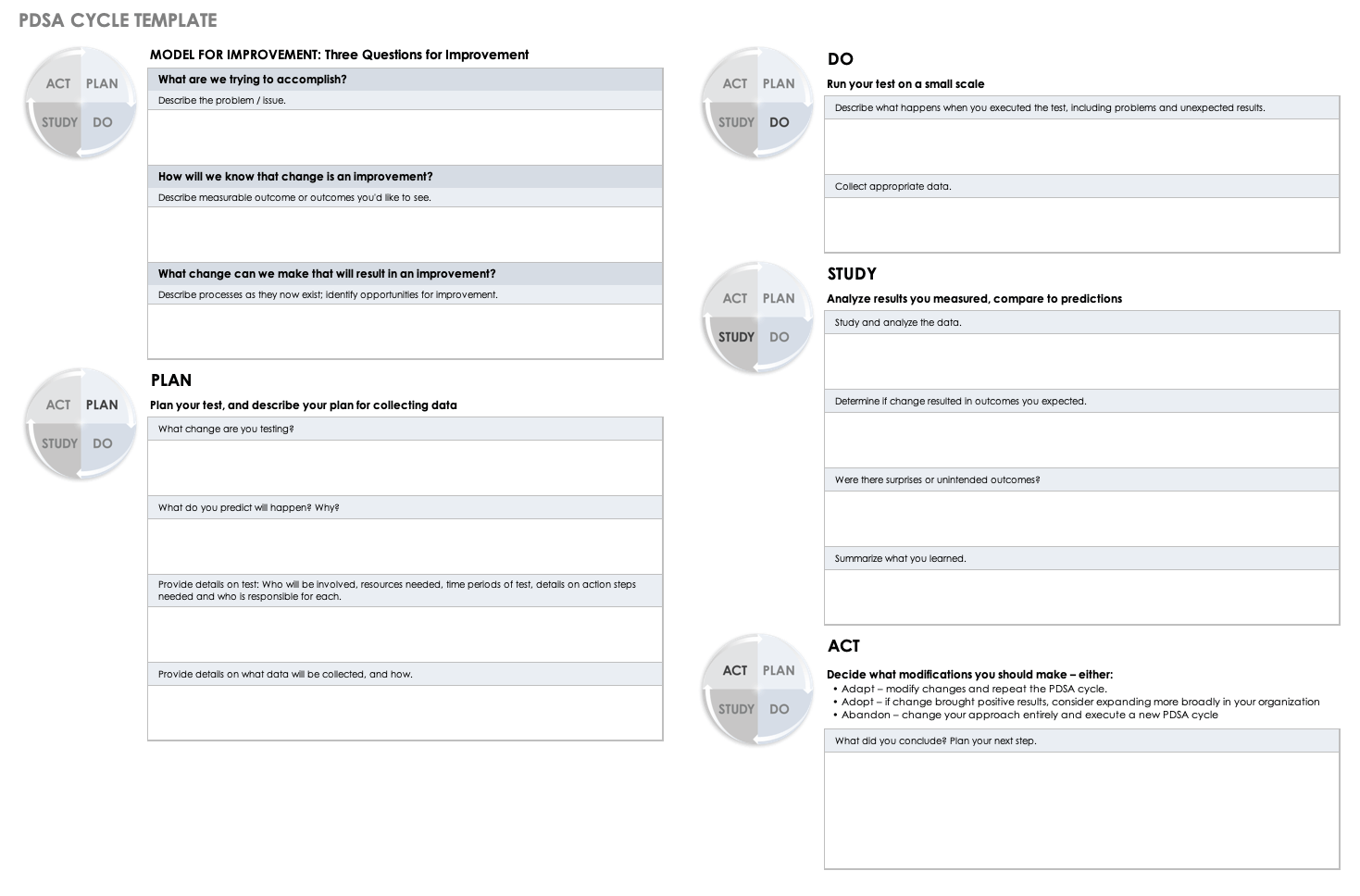


0 Response to "What Kind Of Template Or Tool Does Pdsa Use"
Post a Comment